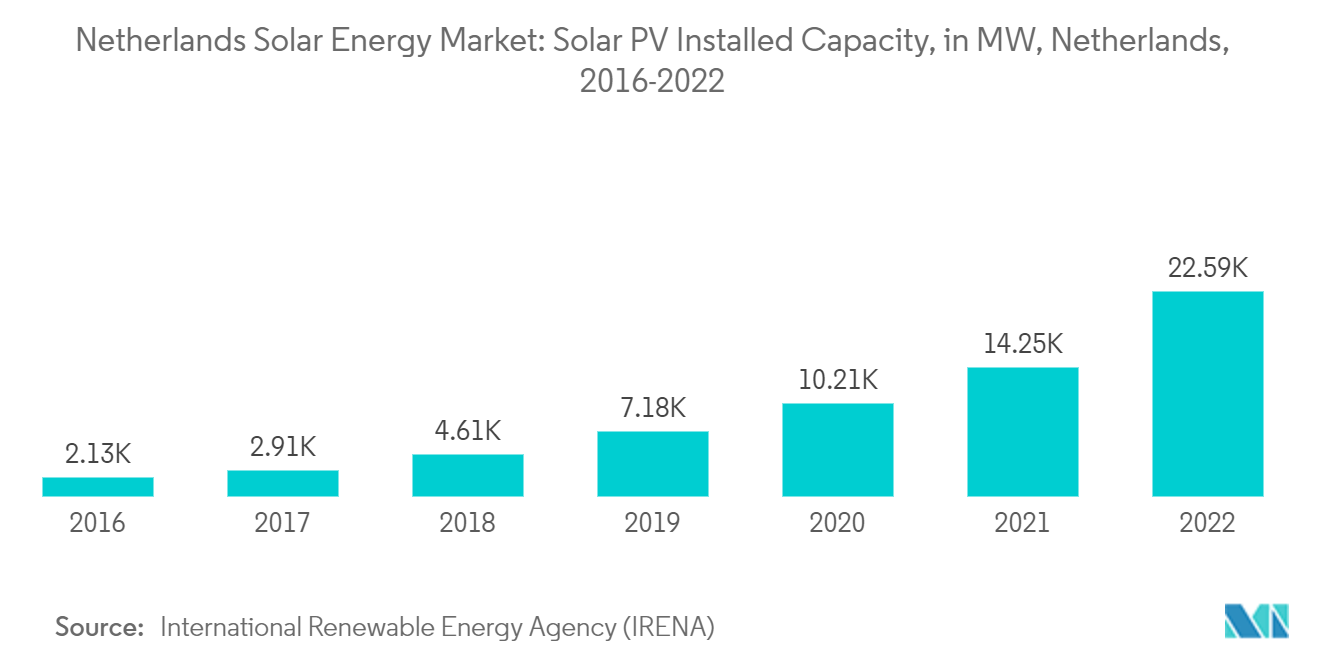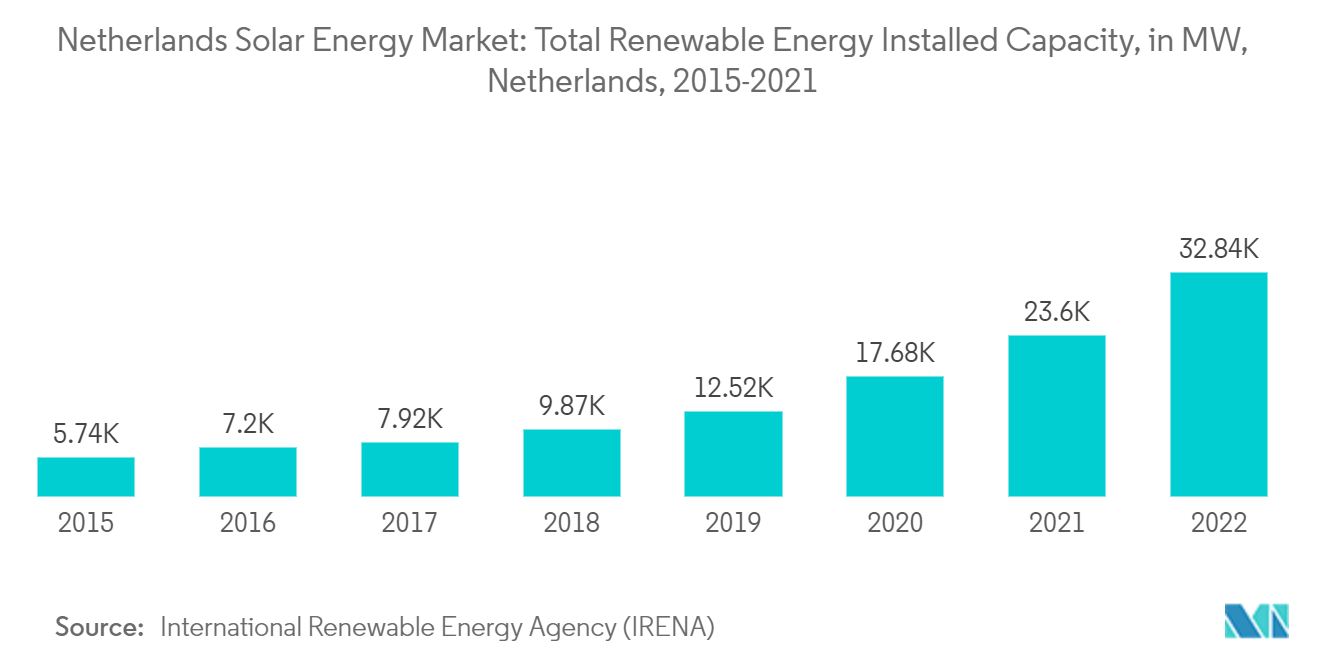Market Trends of Netherlands Solar Energy Industry
Solar PV Segment is Expected to Hold Significant Market Share
- The Netherlands' solar photovoltaic industry was one of the more significant segments in the power generation industry, with concern regarding climatic change and rising air pollution, the government has a roadmap to increase the share of renewable energy, such as solar, in its energy mix during the study period.
- As of 2022, Solar energy was anticipated to cover around 14% of Dutch electricity generation by source. The Dutch solar energy percentage in Dutch electricity generation by demand grew 13 percent when compared to 1% in 2015.
- According to International Renewable Energy Agency (IRENA) 2023 data, the Netherlands' solar PV installed capacity reached 22,590 megawatts in 2022, increasing from 14,911 megawatts in 2021.
- In the last five years, solar photovoltaic (PV) deployment has sped up thanks to lower costs and feed-in tariffs.Most likely, the key factors will help the country reach climate neutrality by 2040. As part of this ambitious target, the country pledged to source all its electricity supply from renewable sources by 2030. Hence, it is likely to boost solar PV deployment across the country.
- As per association of Dutch grid operators, the Netherlands could reach between 180 GigaWatt and 100 GigaWatt of total installed solar capacity by 2050.
- Hence, owing to such developments, the solar PV segment will likely have a significant market share during the forecast period.

Government Initiaves to Support the Market Growth
- The Netherlands has been actively pursuing its renewable energy targets in line with the European Union's strategic approach towards decarbonizing its economy and energy requirements.
- In Netherlands, Climate Act sets legally binding greenhouse gas (GHG) emissions reduction targets for the Netherlands. Specifically, it mandates the government to reduce its total GHG emissions by 95%, compared with a 1990 baseline, in the long run and achieve net zero carbon emissions in the electricity sector by 2050.
- The Netherland is also committed to the European Union's key climate goal under the Fit for 55 Plan, which targets of 55 percent emission reduction in 2030 relative to 1990 levels and net carbon neutrality in 2050. The EU has also pledged to achieve net zero GHGs by 2050. The centerpiece of EU-level mitigation policy is the Emissions Trading System (ETS), which specifies a trajectory of progressively tightening emissions caps for GHG emissions.
- According to the International Renewable Energy Agency (IRENA) 2023 data, the total renewable energy installed capacity of renewables was 32,839 MW in 2022, increasing from 23,598 MW. Among the renewable energy installed capacity, wind power accounts for 9,309 MW, and hydropower accounts for 36 MW in 2022, thus accounting for strong governments initiatives in this sector.
- To meet its sustainability goals of having a high share of renewables in electricity production, the government has implemented several policies in the country. The solar energy sector, thus, has shown tremendous growth in the last decade.
- Further, in 2022, the Dutch government announced earmarking a budget of around USD 13.8 billion for the SDE+ (Dutch Renewable Energy Support Scheme) program. The scheme includes solar parks, wind parks, and hybrid renewable power plants with hydrogen production facilities.
- Owing to the above point, an increase in renewable energy demand is expected to drive the Netherlands' solar energy market during the forecast period.


